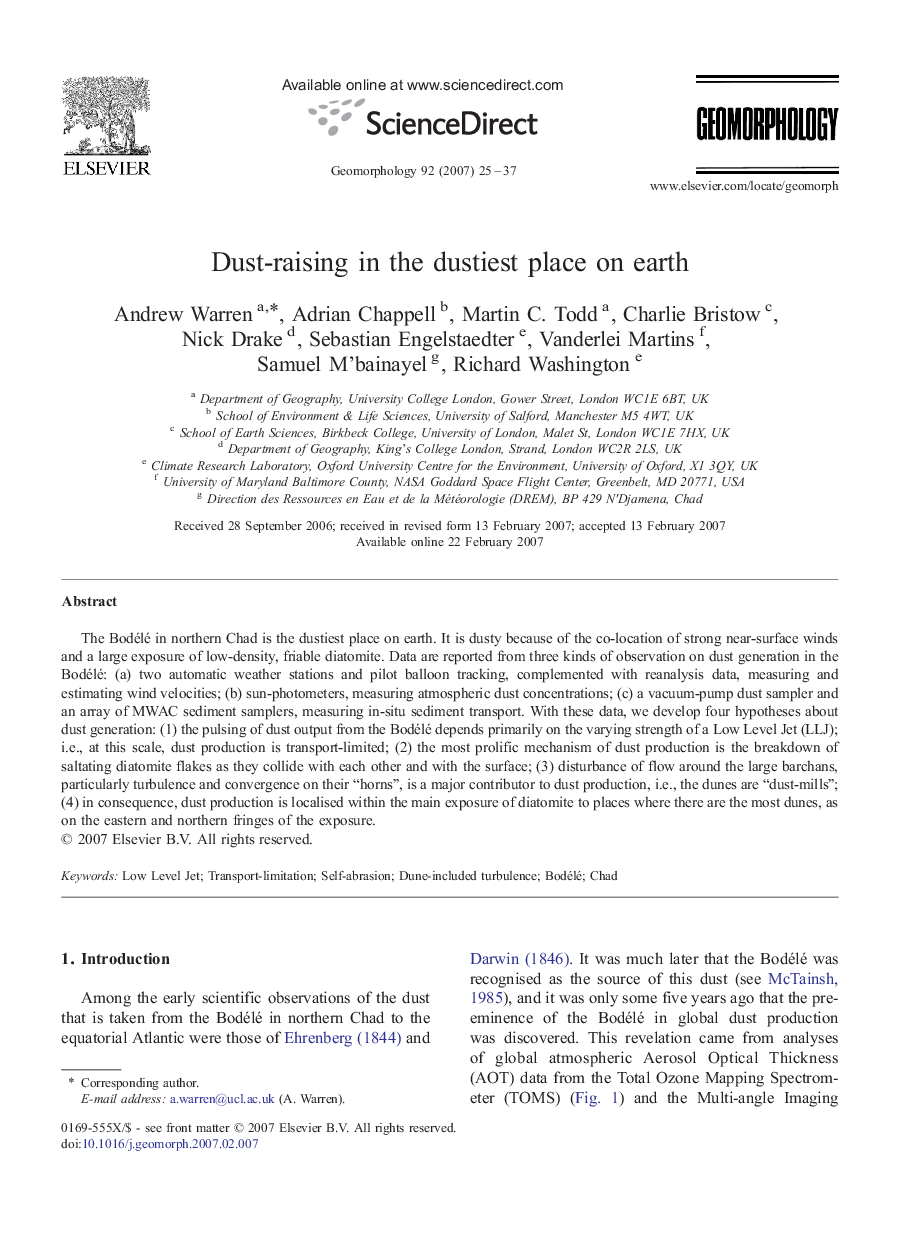| Article ID | Journal | Published Year | Pages | File Type |
|---|---|---|---|---|
| 4687104 | Geomorphology | 2007 | 13 Pages |
The Bodélé in northern Chad is the dustiest place on earth. It is dusty because of the co-location of strong near-surface winds and a large exposure of low-density, friable diatomite. Data are reported from three kinds of observation on dust generation in the Bodélé: (a) two automatic weather stations and pilot balloon tracking, complemented with reanalysis data, measuring and estimating wind velocities; (b) sun-photometers, measuring atmospheric dust concentrations; (c) a vacuum-pump dust sampler and an array of MWAC sediment samplers, measuring in-situ sediment transport. With these data, we develop four hypotheses about dust generation: (1) the pulsing of dust output from the Bodélé depends primarily on the varying strength of a Low Level Jet (LLJ); i.e., at this scale, dust production is transport-limited; (2) the most prolific mechanism of dust production is the breakdown of saltating diatomite flakes as they collide with each other and with the surface; (3) disturbance of flow around the large barchans, particularly turbulence and convergence on their “horns”, is a major contributor to dust production, i.e., the dunes are “dust-mills”; (4) in consequence, dust production is localised within the main exposure of diatomite to places where there are the most dunes, as on the eastern and northern fringes of the exposure.
